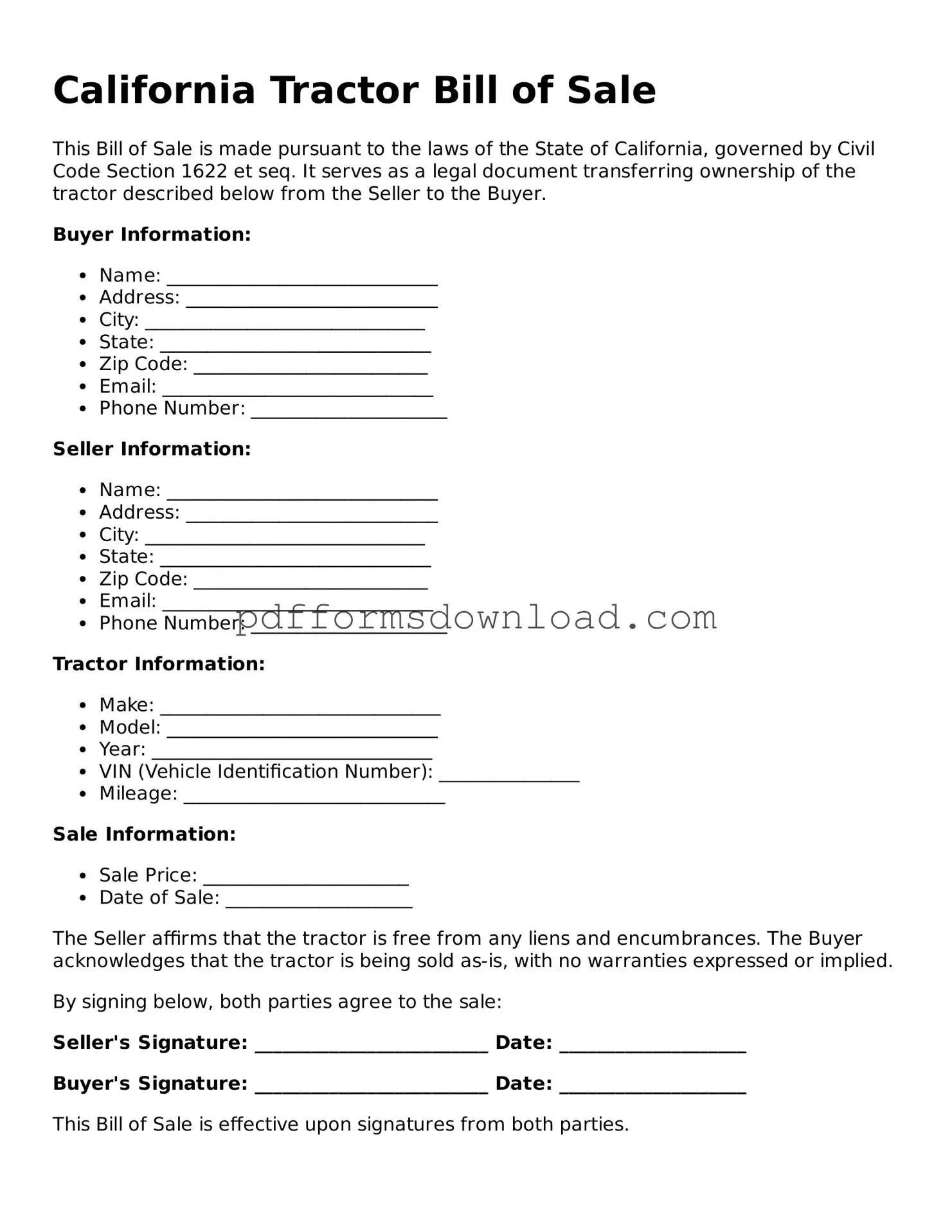What is a California Tractor Bill of Sale?
A California Tractor Bill of Sale is a legal document that records the sale of a tractor between a seller and a buyer. It serves as proof of the transaction and includes essential details such as the names and addresses of both parties, the tractor's identification number, and the sale price. This document is important for transferring ownership and may be required for registration purposes with the California Department of Motor Vehicles (DMV).
Why is a Bill of Sale necessary when selling a tractor?
A Bill of Sale is necessary to protect both the seller and the buyer. For the seller, it provides evidence that the tractor has been sold and can help avoid future disputes regarding ownership. For the buyer, it serves as proof of purchase, which is crucial for registration and insurance purposes. Without this document, the transaction may lack legal standing, leading to potential complications down the road.
What information should be included in the Tractor Bill of Sale?
The Tractor Bill of Sale should include the following information: the full names and addresses of both the seller and buyer, a detailed description of the tractor (including make, model, year, and Vehicle Identification Number), the sale price, and the date of the transaction. It is also advisable to include any warranties or conditions of the sale, as well as signatures from both parties to validate the agreement.
How can I obtain a California Tractor Bill of Sale form?
You can obtain a California Tractor Bill of Sale form from various sources. Many online legal document services offer templates that you can customize. Additionally, the California DMV website may provide downloadable forms. Ensure that any form you use complies with California state laws and includes all necessary information to facilitate a smooth transaction.
